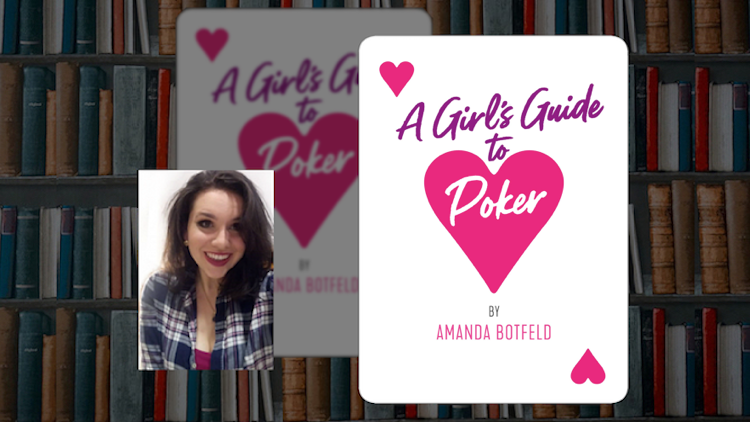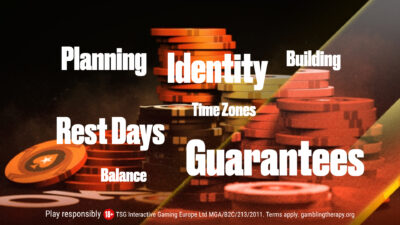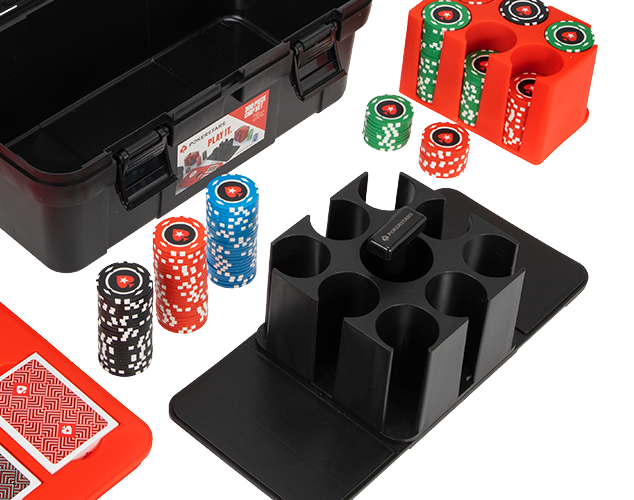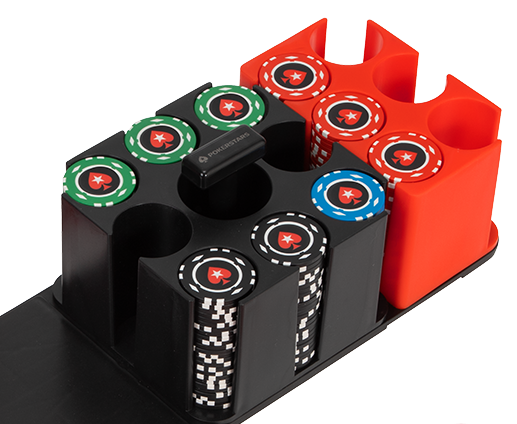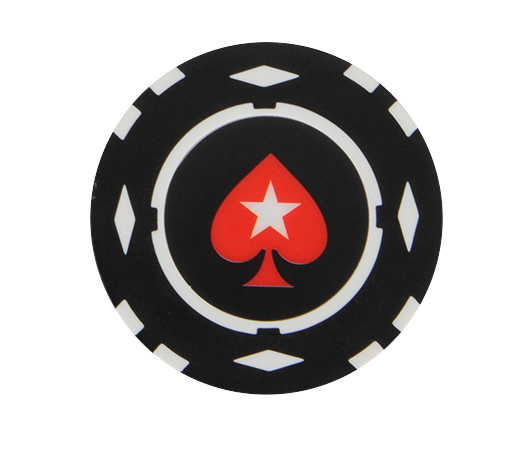It’s Valentine’s Day. Here at the PokerStars Blog we’ve been contemplating Valentine’s Day gift ideas for our special someone. And since our special someone is you, dear reader, we’ve found a good one — an excerpt from Amanda Botfeld‘s new strategy book, A Girl’s Guide to Poker.
Written with women players in mind, Botfeld’s book contains much of value for anyone wishing to learn beginning strategy, teaching all of the fundamentals and then some via short, accessible chapters and quizzes.
Nicknamed the “Bridget Jones” of poker, Botfeld’s work has been previously published The Wall Street Journal, the Los Angeles Times, and the Huffington Post. With A Girl’s Guide to Poker she aims to encourage more women to “turn the tables” (so to speak) and join the game.
The following excerpt highlights what Botfeld calls the “fold better, get called by worse theorem” — that is, the need to recognize when it makes sense to bet your value hands and when it is better to avoid inflating pots with your marginal made hands.
For Better and for Worse
Some people choose chocolate over vanilla1. Others choose to put their shoes on before their shirt. Not everyone wants babies. From day-to-day routines to personal philosophies, it’s hard to find a unified consensus.
But when you play poker, one desire remains consistent across all parties:
You want worse hands to call and better hands to fold.
That strategy remains the same whether you are playing for pennies or millions. Let’s explain our lofty universal truth in real terms.
| The board is 6♣ K♣ 4♦ 10♣ 2♥ . Brad has 6♥ 6♠ .
Nathan has K♦ J♥ . Does Brad want Nathan to call a bet on the river? Yes. Duh. Obvi. Brad has a set of sixes (three-of-a-kind), which beats Nathan’s single pair of kings. He wants the worse hand to call so he can win the pot. Not a trick question. Now let’s say it’s the same board 6♣ K♣ 4♦ 10♣ 2♥ . Brad has 6♥ 6♠ . Anneliese has 8♣ 7♣ . Does Brad want Anneliese to call a bet on the river? No — her flush beats his set of sixes. |
That’s fold better, get called by worse at its heart. It sounds easy, but you’d be surprised by how many poker players don’t adhere to this mega-important principle.
Folding out all worse and only getting called by better is dubbed a “Game Theory Disaster.”
An Example
I was at the final table of a daily poker tournament at a Los Angeles casino in September 2018. Since we were down to the last few players, every time someone was eliminated, there was a pay jump. Those circumstances usually mean the strategy is to play extra straightforward and not get cute raising silly cards. Conservative is cool.


.
I was first to act and raised. My range here should be two face cards minimum or a big pocket pair. One guy called in the small blind.
The flop was A♣ K♦ Q♠ .
Instead of checking to me, he went all-in with K♣ Q♣ .
This is terrible! Why?
Because I am only going to call if I have him beat. He is going to fold out everything worse.
Let’s say I had raised 9♦ 9♥ or J♣ J♦ . I now know to fold those hands. And even though it’s not fun, I’d probably have to at least consider folding a hand like A♠ J♠ because his story is stronger than one pair. More importantly, if for some frisky reason I had a hand like 5♠ 6♠ , I’d try to win by bluffing — especially because this flop is perfect for my range. I’m supposed to have lots of aces, kings, and even queens.
But I can’t pretend anymore — he took away my ability to bluff!
I can’t call a bet with 5♠ 6♠ , but I could’ve bluffed with it. And I definitely would’ve.
He didn’t think it through. (On a more human level, he probably just saw his two pair and got excited. Like he went on autopilot!) The “fold better, get called by worse theorem” also serves as a reminder to think before you act. It’s a way of slowing down immediate reactions.
Don’t Block Someone’s Chance to Bluff!
The most common example of this you will see is raises with top pair. Like so:
Annie raises pre-flop.
Flop: A♦ 7♣ 3♠ .
Annie c-bets.
Sierra raises with A♣ 9♠ .
This is a big no-no.
Raising here with top pair is very bad. Totally amateurish too. An embarrassing mistake, on par with cutting your own bangs as a kid way, way, way above your forehead.
Sierra is only going to get called by better and fold out worse. If Annie was bluffing with a hand like K♣ Q♠ or J♥ 10♦ , she will fold. There’s no way Sierra can earn more chips or money off her; she shut it down. Annie’s bluffs are taken away. Even worse, let’s say Annie had a hand like A♣ 4♦ she’d consider calling bets with. She now no longer has to wonder. Sierra told her in advance to fold.


That’s a disaster. Personal sabotage. A self-inflicted wound. Especially if Annie had a worse ace — because that’s how Sierra would make the most money. Annie knows only to continue with two pair, sets, or maybe aces with a very good kicker. A kicker better than Sierra’s, that’s for sure.


.
Do not raise with one pair!
Raising with one pair inflates the pot!
There are exceptions to every rule — raising with one pair is appropriate once in a blue moon. I’ve done it before in choice spots, but only on certain board textures, with a good feel for my opponents. Generally, it’s a bad play. If an opponent called your top pair raise, you’re probably going to need to reopen your wallet.
1 My vanilla bean-loving sisters, where you at?
A Girl’s Guide to Poker by Amanda Botfeld is available in paperback or as an e-book at D&B Poker.
D&B Publishing (using the imprint D&B Poker) was created by Dan Addelman and Byron Jacobs 15 years ago. Since then it has become one of the leading publishers of poker books with titles by Phil Hellmuth, Jonathan Little, Mike Sexton, Chris Moorman, Dr. Patricia Cardner, Lance Bradley, Greg Raymer, Dylan Linde, Ashley Adams, Martin Harris and more, all of which are available at D&B Poker.
Back to Top

